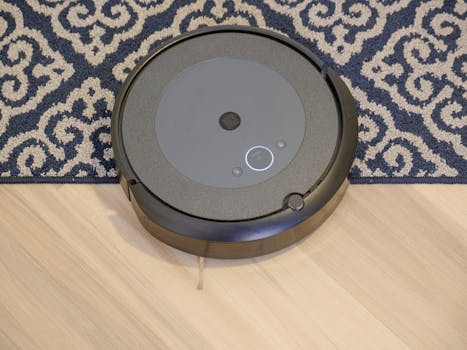
Smart Homes and Smart Living: The Technological Transformation of European Homes by 2025
Smart Homes and Smart Living are revolutionizing the way we live, work, and interact with our surroundings. The European home is at the forefront of this transformation, with cutting-edge technology and innovative design changing the face of residential living. By 2025, smart homes and smart living will become the norm, offering enhanced convenience, comfort, and sustainability.
Introduction to Smart Homes and Smart Living
Smart homes and smart living refer to the integration of technology and design to create living spaces that are responsive, adaptive, and connected. This concept encompasses a wide range of elements, from energy-efficient systems and home automation to voice-controlled assistants and IoT devices. The goal of smart homes and smart living is to create a seamless, intuitive, and personalized experience for occupants, while also promoting energy efficiency, sustainability, and well-being.
Key Trends and Technologies Driving Smart Homes and Smart Living
Several key trends and technologies are driving the adoption of smart homes and smart living in Europe. These include:
- Internet of Things (IoT): The proliferation of IoT devices, such as sensors, cameras, and smart speakers, is enabling the creation of connected, interactive, and responsive living spaces.
- Artificial Intelligence (AI): AI-powered systems are being integrated into smart homes to provide predictive maintenance, energy optimization, and personalized recommendations.
- 5G and High-Speed Connectivity: The rollout of 5G networks and high-speed connectivity is facilitating the adoption of smart home technologies, enabling seamless communication and data exchange between devices.
- Sustainable Energy Solutions: The increasing demand for sustainable energy solutions is driving the adoption of solar panels, energy-efficient systems, and smart grids in European homes.
Benefits and Opportunities of Smart Homes and Smart Living
The benefits and opportunities of smart homes and smart living are numerous and far-reaching. These include:
- Enhanced Convenience and Comfort: Smart homes and smart living offer occupants a high level of convenience, comfort, and flexibility, with automated systems and personalized settings.
- Energy Efficiency and Sustainability: Smart homes and smart living promote energy efficiency, reduce waste, and support sustainable living practices, contributing to a reduced carbon footprint.
- Improved Health and Well-being: Smart homes and smart living can support improved health and well-being, with features such as air quality monitoring, noise reduction, and personalized wellness programs.
- Increased Property Value: Smart homes and smart living can increase property value, with modern, high-tech features and energy-efficient systems appealing to potential buyers and renters.
Challenges and Limitations of Smart Homes and Smart Living
While smart homes and smart living offer numerous benefits and opportunities, there are also challenges and limitations to consider. These include:
- Security and Privacy Concerns: The increased connectivity and data exchange in smart homes and smart living raise concerns about security and privacy, with potential risks of data breaches and cyber attacks.
- Cost and Affordability: The adoption of smart home technologies and sustainable energy solutions can be costly, with high upfront investments and potential barriers to affordability.
- Complexity and Interoperability: The integration of multiple devices and systems in smart homes and smart living can create complexity and interoperability issues, requiring skilled installation and maintenance.
- Social and Behavioral Changes: The adoption of smart homes and smart living requires significant social and behavioral changes, with occupants needing to adapt to new technologies and practices.
Conclusion and Future Outlook
In conclusion, smart homes and smart living are transforming the European home, offering enhanced convenience, comfort, and sustainability. While there are challenges and limitations to consider, the benefits and opportunities of smart homes and smart living are numerous and far-reaching. As we look to the future, it is likely that smart homes and smart living will become the norm, with ongoing technological advancements and innovative design driving the adoption of these technologies.






